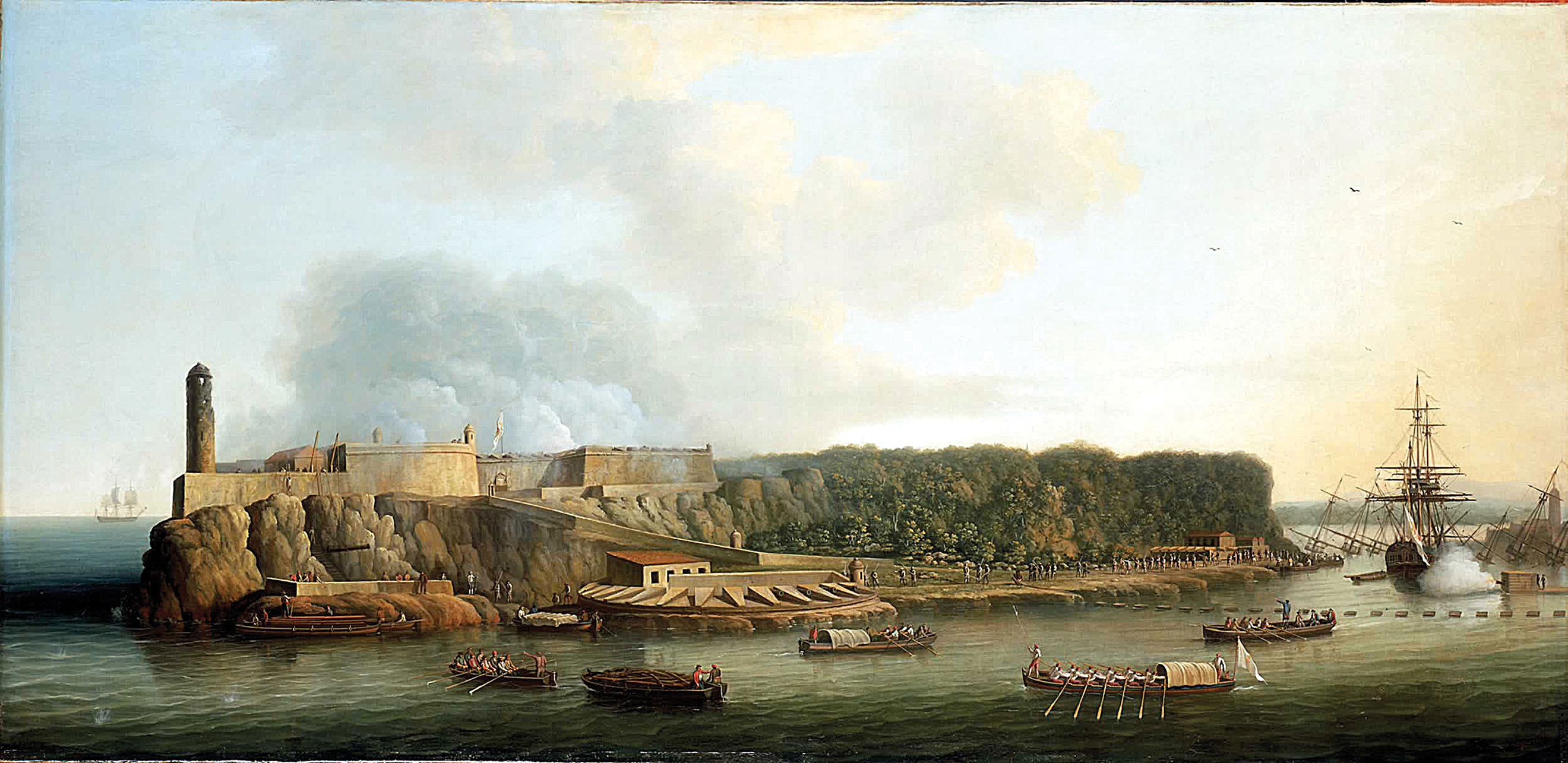In June 1762, a British force consisting of nearly 13,000 soldiers, 17,000 sailors and marines, 23 ships of the line, 19 auxiliary warships, and 160 transports arrived in Havana in the midst of the Seven Years’ War. By mid-August 1762, the British expedition had conquered the city. The jubilation of Britons and British Americans was immediate. One New York preacher likened the British triumph to the victory over the Armada in 1588. For Spain, the cost of losing Havana was immense: in the 1763 Treaty of Paris, Spain ceded Florida to Britain in exchange for the return of Cuba.
Why, asked Professor Elena Schneider of UC Berkeley’s Department of History, was the capture of Cuba a source of such joy and devastation? Why would Spain give up Florida for the return of Cuba? For Schneider, the answers are found in Cuba’s role in the Atlantic world of the mid- to late 18th century as revealed by the British occupation of Havana and the subsequent Spanish reform of Cuba.
Long marginalized as “stagnant” by historians, Cuba was, in fact, an essential interest for Spain, Britain, and Britain’s colonies in the New World throughout the 18th century. Situated along both the Old and New Bahama Channels — important deep-water sea lanes — Cuba was “the key and gateway of the Americas,” where the Spanish silver fleet gathered at Havana’s immense port. Unsurprisingly then, both Cuba and Havana had been the target of several assaults since 1537. As recently as 1741, Britain had occupied Guantanamo Bay for some eight months during the War of Jenkins’ Ear.
Beyond its strategic importance, Cuba was a vital economic interest in the Atlantic World.
By the mid-18th century, Havana had become the third most populous city in Spain’s New World colonies and an attractive market for British goods. With Cuba’s high demand for slaves, flour, cloth, and luxury items and its wealth of silver, tobacco, hides, and livestock to trade in return, Havana was immersed in vibrant Atlantic commercial networks. Cuba’s trade with British merchants was of particular importance, as nearly half the nation’s products left the island through contraband channels, which were primarily British, by mid-century.
Rather than marking a dramatic opening of a stagnant Cuban economy, then, the British occupation of Havana represented a continuation of existing trade patterns between Cuban elites and British merchants. Indeed, the ties between these two groups were essential during the brief period of British governance, as elites quickly acquiesced to the occupation and cultivated trading opportunities with their new rulers.
Following the restoration of Cuba to Spanish rule, the lessons for Charles III were abundantly clear. While Cuba was of vital importance to the Spanish empire, the Crown found the loyalty of its elites wanting. To discourage future accommodation with the British, the Crown disciplined wayward elites through treason trials. More importantly and rather surprisingly, however, the Crown realized that freed and enslaved Africans had been essential in defending Cuba.
The tradition of Cubans of African descent participating in the defense of Cuba was not entirely novel in 1763: Afro-Cuban volunteers had been defending the Crown since the beginning of the 17th century. In 1762, however, these volunteers were a vital component of the defense of Havana. In anticipation of a likely British proclamation that slaves who fought the Spanish defenders would be granted freedom, the Spanish Captain General of Cuba issued a similar decree in order to bolster the defense of Havana, leading thousands of slaves to join the ranks of the defenders. One particularly enthusiastic slave, for example, recalled that he “ran 150 leagues” to present himself as a volunteer. These companies of defenders distinguished themselves in battle, gaining payment for capturing attackers, awards for their white commanders, and freedom for the volunteers themselves.
Yet the national narratives of the defense of Havana have long omitted the role of Afro-Cuban volunteers, instead emphasizing traditional figures. Cuba’s governor in 1762, Juan de Prado, is widely known for his role — or lack thereof – in the defense of Havana, for which he was court-martialed and sentenced to death. In contrast, Luis Vicente Velasco de Isla, the commander of one of Havana’s fortresses, is remembered as a hero for his valiant efforts in defense of the city. To this day, a memorial in Westminster Abbey commemorates his actions. Likewise, José Antonio Gómez y Pérez de Bullones (known as “Pepe Antonio”), the mayor of Guanabacao, has been commemorated as a creole hero even in post-revolutionary Cuba.
Professor Schneider revises this traditional narrative by emphasizing the place of African slaves and freed individuals of African descent both during the defense of Havana and in the decades that followed. Defeat and the loss of Havana in the Seven Years’ War served as a catalyst for major reforms in the empire. After 1763, Cuba would serve as a testing site for the implementation of free trade and the improvement of fortifications. Likewise, Spain’s Bourbon kings also began implementing new policies regarding the slave trade. Spain developed its own slave trade — initially under monopolies and, later, under a free-trade regime — and expanded sugar production in Cuba. These efforts ultimately bolstered the island’s defenses, altered Cuba’s economic function in the Atlantic world, reduced the likelihood of elite collusion with the British and French, and led to the creation of a Spanish colony in Northwest Africa: Equatorial Guinea.
Elena Schneider is an assistant professor of History at UC Berkeley. She spoke for CLAS on October 21, 2013.
Raphael Murillo is a graduate student in the Department of History at UC Berkeley.

